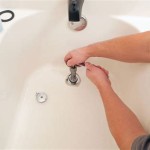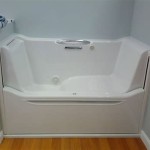Can You Fall Asleep in the Bathtub and Drown?
The question of whether an individual can fall asleep in a bathtub and drown is a serious one, carrying implications for personal safety and awareness of the potential dangers associated with bathing. While a relaxing bath is often promoted as a way to unwind and de-stress, understanding the physiological risks and preventative measures is crucial. This article aims to explore the factors that contribute to drowning while asleep in a bathtub, the individuals who are more susceptible, and practical tips for ensuring a safe bathing experience.
The human body possesses natural reflexes that are designed to protect itself from drowning. These reflexes, however, can be compromised by various factors, including fatigue, intoxication, underlying medical conditions, and the presence of substances that impair consciousness. Drowning occurs when the lungs fill with fluid, preventing the intake of oxygen necessary for survival. The process can be relatively rapid, particularly if the individual is incapacitated or unable to react effectively.
Understanding the Dangers of Sleep and Immersion
The combination of sleep and immersion in water presents a significant risk. When an individual falls asleep, their level of consciousness decreases, making them less responsive to external stimuli. In a bathtub, this loss of awareness can lead to a compromised ability to maintain an upright position, potentially resulting in submersion. Further, the warm water of a bath can induce relaxation and drowsiness, exacerbating the likelihood of falling asleep unintentionally. The physiological effects of warm water include vasodilation, which leads to a drop in blood pressure. This reduction in blood pressure can contribute to feelings of lightheadedness and dizziness, further increasing the risk of losing consciousness.
Specifically, the following sequence of events can lead to drowning while asleep in a bathtub. First, the individual begins to feel drowsy due to the combined effects of warm water and relaxation. As they drift off to sleep, their muscle control diminishes, making it difficult to maintain a stable posture. Consequently, their head may slip beneath the surface of the water. Upon immersion, the body attempts to trigger involuntary reflexes like coughing and gasping. However, if the individual is deeply asleep or impaired, these reflexes may be suppressed, allowing water to enter the lungs. The presence of water in the lungs disrupts oxygen exchange, leading to hypoxia (oxygen deprivation). Hypoxia can rapidly cause brain damage and, ultimately, death.
The risks are significantly amplified for individuals who have consumed alcohol or drugs. Alcohol acts as a depressant, slowing down brain function and impairing coordination. Similarly, many prescription and illicit drugs can have sedative effects, increasing drowsiness and reducing awareness. These substances not only increase the likelihood of falling asleep but also diminish the body's natural ability to react to a drowning situation. Therefore, using alcohol or drugs before or during a bath is strongly discouraged due to the heightened risk of accidental drowning.
Factors Increasing Susceptibility
Certain populations are more vulnerable to drowning while sleeping in the bathtub. The elderly, for example, may experience age-related physical limitations and cognitive impairments that increase their risk. Reduced muscle strength, impaired balance, and decreased reaction time can make it difficult for older adults to maintain their position in the tub and react quickly if they begin to slip under the water. Additionally, elderly individuals may be taking medications that have sedative side effects, further compounding the risk.
Individuals with certain medical conditions are also at increased risk. People with epilepsy, for instance, are at risk of having a seizure while in the bathtub, which could lead to loss of consciousness and drowning. Similarly, individuals with heart conditions or other cardiovascular problems may experience fainting or dizziness due to changes in blood pressure induced by the warm water. Those with diabetes may also be more susceptible due to the potential for fluctuations in blood sugar levels, which can lead to confusion, dizziness, and loss of consciousness.
Young children are particularly vulnerable to drowning in bathtubs. Even a small amount of water can be dangerous for infants and toddlers. Children lack the strength and coordination to lift themselves out of the water if they slip or become submerged. Furthermore, they are often left unsupervised in the bathtub, which significantly increases the risk of accidental drowning. It is crucial to always supervise young children closely while they are in the bathtub and to never leave them unattended, even for a brief moment.
People experiencing extreme fatigue or sleep deprivation are also at heightened risk. Exhaustion can significantly impair cognitive function and reaction time, making it more likely that an individual will fall asleep unexpectedly. The combination of fatigue and the relaxing effects of warm water can be a potent trigger for drowsiness, particularly after a long and stressful day. Therefore, it is important to avoid taking a bath when excessively tired.
Preventive Measures for Safe Bathing
Implementing several safety measures can significantly reduce the risk of falling asleep in the bathtub and drowning. One of the most important precautions is to avoid consuming alcohol or drugs before or during a bath. These substances can impair consciousness, increase drowsiness, and diminish the body's ability to respond to a drowning situation. Maintaining sobriety is crucial for ensuring a safe bathing experience.
Another important safety measure is to set a timer or alarm to avoid spending too long in the bathtub. A timer can serve as a reminder to get out of the tub before becoming overly relaxed or drowsy. Setting a relatively short time limit, such as 20-30 minutes, can help prevent prolonged immersion and reduce the risk of falling asleep. A digital timer, a smartphone alarm, or even a traditional kitchen timer can be used effectively.
The water temperature should also be carefully monitored. Hot water can exacerbate the effects of relaxation and drowsiness, increasing the likelihood of falling asleep. Maintaining a comfortable, but not excessively hot, water temperature can help minimize this risk. Using a thermometer to check the water temperature before entering the tub is recommended, ensuring it is within a safe range. The ideal water temperature for bathing is typically between 100°F (38°C) and 104°F (40°C).
Bathing with a companion is another effective safety measure, particularly for individuals who are elderly, have medical conditions, or are otherwise at increased risk. Having another person present can provide assistance and supervision, ensuring that help is readily available if needed. The companion can also monitor the individual's condition and alert them if they appear to be becoming overly drowsy or unresponsive.
Consider the use of assistive devices to enhance safety in the bathtub. Grab bars can provide additional support and stability, making it easier to get in and out of the tub. Bath seats or benches can allow individuals to sit comfortably while bathing, reducing the risk of slipping or falling. Non-slip mats can also be placed in the tub to provide better traction and prevent accidental falls. These devices can be particularly beneficial for elderly individuals and those with mobility limitations.
Ensure the bathroom is well-ventilated to prevent excessive humidity and heat. High humidity can contribute to feelings of discomfort and drowsiness. Opening a window or turning on a ventilation fan can help circulate fresh air and maintain a more comfortable environment. Proper ventilation can also help prevent condensation, reducing the risk of slipping on wet surfaces.
Avoid taking a bath when feeling excessively tired or sleep-deprived. If experiencing extreme fatigue, it is best to opt for a quick shower instead of a long, relaxing bath. A shower allows for effective cleaning without the prolonged immersion and relaxation that can increase the risk of falling asleep. Resting and getting adequate sleep is preferable before engaging in potentially risky activities such as bathing.
Being mindful of one's physical and mental state is essential before and during a bath. Paying attention to any feelings of dizziness, lightheadedness, or excessive drowsiness is crucial. If any of these symptoms arise, it is important to immediately exit the bathtub and seek assistance if needed. Promoting personal safety and wellbeing requires consistent awareness and vigilance.
In summary, while a relaxing bath can be a beneficial part of a self-care routine, understanding and mitigating the potential risks associated with falling asleep in the bathtub is paramount. By adhering to safety precautions and being mindful of individual health conditions and lifestyle choices, individuals can significantly reduce the risk of accidental drowning and ensure a safer and more enjoyable bathing experience. Ongoing education and awareness campaigns are vital in promoting responsible bathing habits and preventing tragic incidents.

Is Sleeping In The Bath Dangerous Bed Consultant

Woman Ly Drowned In Bath Three Times Due To Narcolepsy Metro News

Woman Ly Drowned In Bath Three Times Due To Narcolepsy Metro News

Tub Drownings Can Happen In Minutes When Is It Safe To Leave Child Alone

Tub Drownings Can Happen In Minutes When Is It Safe To Leave Child Alone
Can You Sleep In A Hot Tub Quora

Can I Drown In A Float Therapy Tank And What Floating Is Like Milwaee

Survival Is It Possible To Sleep On Water Quora

At What Age Can I Leave My Child In The Bath Alone

The Mystery In Master Bedroom
Related Posts








